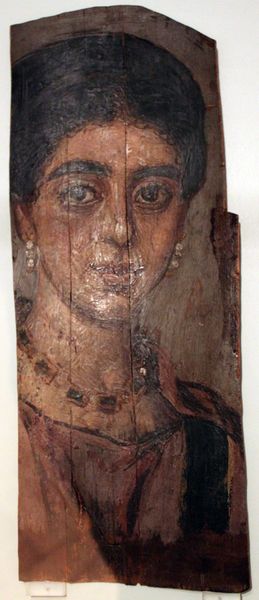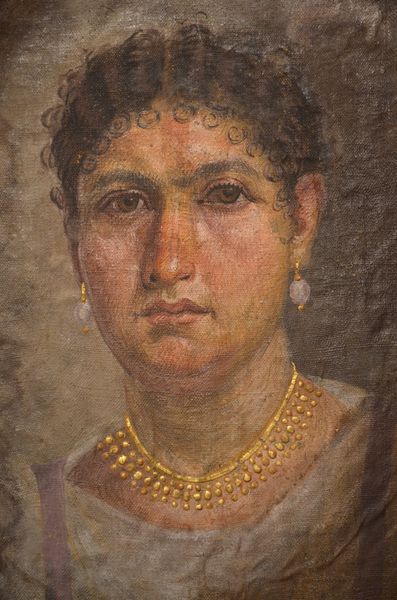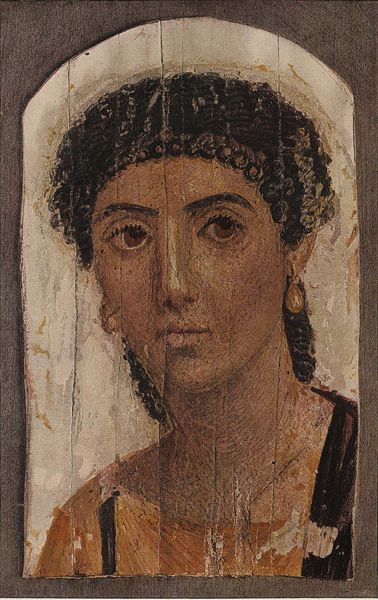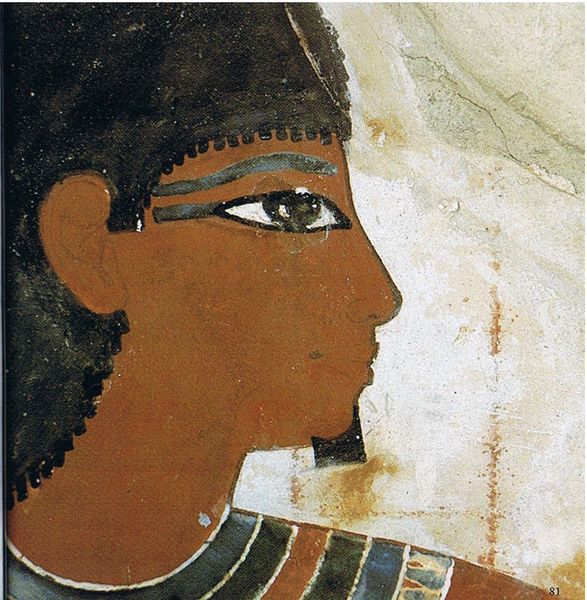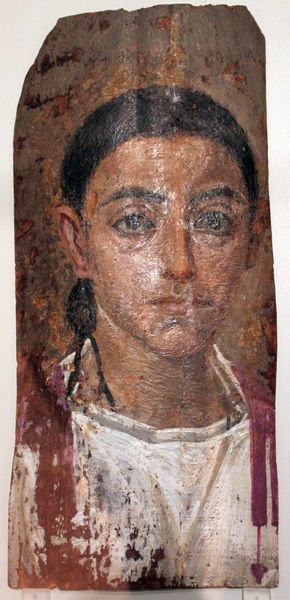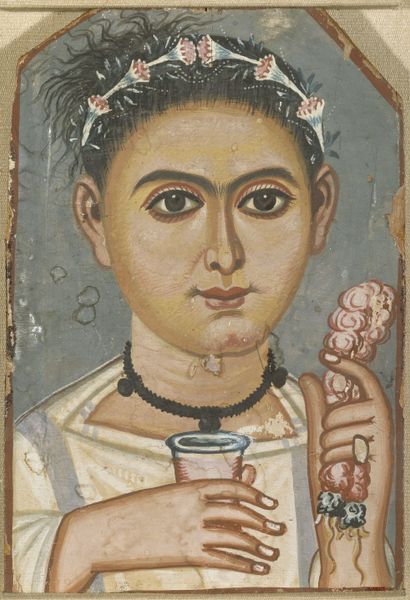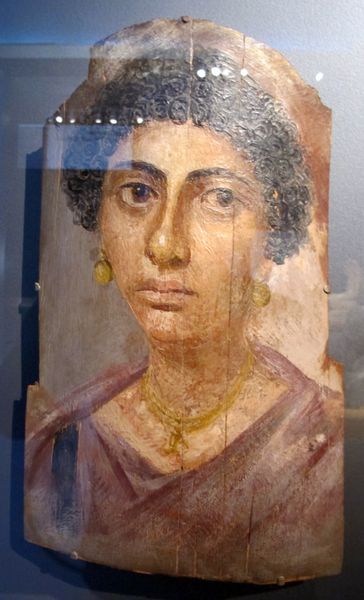
tempera, painting
#
portrait
#
tempera
#
painting
#
ancient-egyptian-art
#
figuration
#
oil painting
#
ancient-mediterranean
#
lady
#
portrait art
Copyright: Public domain
Curator: The portrait we're looking at is a Fayum mummy portrait, currently residing at the Cleveland Museum of Art. Editor: Wow, she's serene. It's like looking into the eyes of someone impossibly removed from the chaos of now. A gentle gaze fixed across centuries, maybe? There's a quiet dignity there. Curator: These portraits were common in Roman Egypt. Painted on wood with tempera, they were attached to the mummies of the deceased, representing a fascinating intersection of Egyptian burial customs and Roman portraiture. Editor: It’s a weird, beautiful paradox. A personalized farewell clinging to the hope of something beyond. Like someone took a snapshot of earthly life, all gilded and crowned, and then…well, you know. Poof! Curator: Precisely. Consider the representation of identity: an Egyptian ritual infused with Roman aesthetics, hinting at a complex society where different cultures mingled. She wears a gold wreath, Roman dress with gold jewelry—status symbols reflective of her social standing within that melting pot of cultures. We need to ask ourselves how race, class and gender are performed in this portrait, and what political messaging this conveys? Editor: I like that idea of performance! Those direct eyes stare me down. She’s like: “Yes, darling, gaze upon my earthly finery…I rocked the toga." There is something playful too; what were her secrets? I want to know more about her real story. She could be a novel heroine. Curator: Indeed. Her “real” story is irrevocably lost to us. Still, as scholars, we can look to contemporary theories about intersectionality to understand the dynamics between Roman colonial rule, religious beliefs, and evolving social customs. Her adornments might reveal more than mere status; they might offer clues to understanding the construction and projection of her identity, beyond just "wealthy Roman Egyptian lady." Editor: This ancient image resonates with me across millennia... as though art somehow conquers death in small and tender doses. Curator: It truly provides an amazing case study. It connects us to those lives, prompting introspection about our contemporary relationship with identity, mortality, and the ever-evolving narrative of the human experience.
Comments
No comments
Be the first to comment and join the conversation on the ultimate creative platform.

